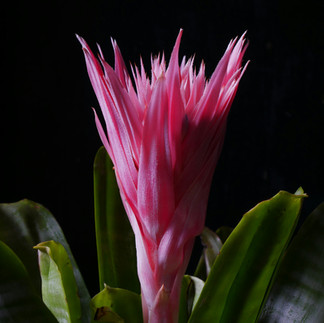Essential Guide to Bromeliads: Care, Types, and Stunning Varieties
- .
- Oct 4
- 3 min read
Bromeliads have become a staple in today's plant enthusiasts’ collections, seamlessly merging vibrant beauty with effortless care. These unique plants offer captivating foliage and striking shapes, making them a standout choice for any indoor or outdoor space. Whether you're a green-fingered expert or just starting out, knowing how to care for bromeliads will enhance your environment and appreciation for these stunning plants.
Appearance and Characteristics of Bromeliads
Bromeliads are truly having a moment. Once viewed as niche collector's items, they now grace homes and gardens everywhere. Their appeal lies in their outstanding variety and adaptability. These plants come in various shapes, colors, and sizes, making it easy for anyone to find one that complements their style. The foliage of bromeliads can exhibit bright reds, deep greens, and even silvery hues, with some species producing jaw-dropping flowers that can dramatically change a room’s aesthetic.
For instance, the Guzmania species can showcase vibrant red and yellow flowers, while the Aechmea 'Blue Rain' can sprout a magnificent blue inflorescence that captivates visitors. September is when these beauties are often at their peak, making it an ideal time to appreciate their color.

Types and Species of Bromeliads
With thousands of species across many genera, there’s a bromeliad for nearly every garden or home. Here are a couple of popular types to illustrate this diversity:
Alcantarea Species
Among the most admired is Alcantarea imperialis, commonly known as the giant alcantarea. Varieties like “Rubra,” “Purpurea,” and “Silver Plum” showcase stunning foliage. The leaves often have striking silver-green tops and rich plum undersides.
These plants can grow impressively wide, exceeding 1 meter, and their flower spikes could reach heights of 2.5 meters. They thrive in full sun and are cold-tolerant, although frost should be avoided. Perfect for planting in large pots or feature areas, they create a dramatic focal point outdoors or in spacious interiors.
Care Tips for Bromeliads
Climate and Position
Bromeliads flourish best in tropical and subtropical climates. However, many species adapt well to warm, temperate zones or even indoor settings where temperatures can be controlled. They can tolerate conditions ranging from full shade to bright sunlight, enabling them to fit into a variety of environments. For example, in the U.S., the Guzmania thrives in southern states where warmth is consistent, allowing it to flourish year-round.
Soil and Watering
When it comes to soil, bromeliads prefer well-draining mediums. A mix suitable for orchids works well. Interestingly, these plants don’t need frequent watering, especially when placed in environments with high humidity, such as bathrooms or kitchens. In fact, overwatering can lead to root rot. During hot months, a minimal amount—perhaps once every two weeks—should suffice, making them ideal for those prone to forgetfulness.
Feeding
A notable benefit of bromeliads is their low feeding requirements. They generally do well with little to no fertilization. If you wish to give them a boost, a diluted liquid fertilizer once a month during the growing season can encourage growth and flowering. Many gardeners report that their bromeliads thrive without fertilizers, showcasing their resilience and adaptability.
Embrace the Beauty of Bromeliads
Bromeliads are more than just plants; they are vibrant glimpses of nature that can elevate your living space. With their wide array of forms and colors, these plants are perfect for any home or garden style. Whether you opt for the stunning Alcantarea or another breathtaking variety, adding bromeliads can transform your environment into a vivid display of natural beauty. Consider selecting one today and see how it can brighten your life!





.png)























Comments